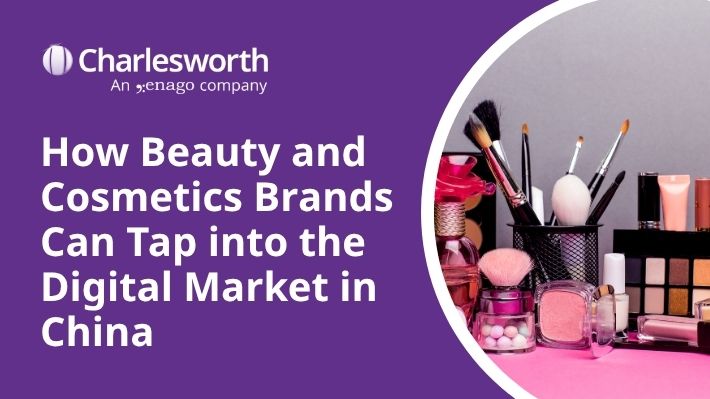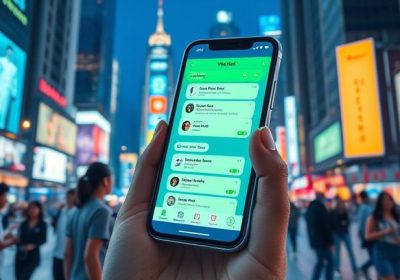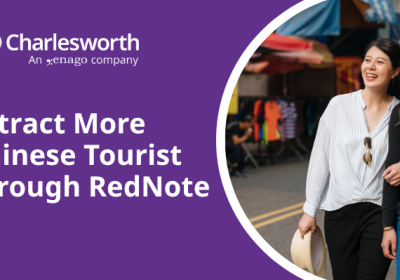How Beauty & Cosmetics Brands Can Tap into the Digital Market in China | Charlesworth Group

China represents one of the largest and most lucrative beauty and cosmetics markets in the world, making it a prime target for global brands. With a population of over 1.4 billion people, a growing middle class, and an increasing appetite for high-quality beauty products, China offers immense opportunities for cosmetics brands. However, tapping into this vast market requires a solid understanding of the local digital landscape, cultural preferences, and the unique ways Chinese consumers interact with brands. China’s $80B beauty market is projected to grow 12% annually (Euromonitor 2023), but 68% of foreign brands fail to localize effectively. Here’s how to avoid becoming a statistic.
1. Understanding the Chinese Digital Ecosystem
Before diving into specific strategies, it’s crucial to understand the unique digital landscape in China. Unlike the rest of the world, where platforms like Google, Facebook, and Instagram dominate, China has its own ecosystem of social media and e-commerce platforms that are critical for success.
Key platforms for beauty and cosmetics brands in China include:
- WeChat: The all-in-one messaging app that functions as a social media platform, e-commerce hub, payment system, and more. It’s essential for customer engagement, brand-building, and driving sales. WeChat beauty users spend 34 minutes/day browsing Official Accounts (Tencent 2023).
- Weibo: The Chinese equivalent of Twitter, Weibo is perfect for brand awareness, influencer collaborations, and viral marketing campaigns.
- Little Red Book (Xiaohongshu): A powerful social media platform where users share product reviews, experiences, and recommendations, making it particularly valuable for beauty brands looking to build trust with Chinese consumers. Xiaohongshu’s 200M MAU skew 78% female, aged 18-35 (QuestMobile).
- Tmall and JD.com: China’s largest e-commerce platforms, where beauty and cosmetics brands can set up official stores to tap into the growing online shopping market.
- Failure Case Warning: Sephora’s initial Tmall store experienced a 40% cart abandonment rate due to non-localized product bundles. Relaunching with ‘Double 11 Gift Boxes’ tailored for gifting boosted sales by 300%.
2. Leverage Influencer Marketing and KOLs
Influencer marketing is one of the most powerful tools for beauty brands in China. Known as Key Opinion Leaders (KOLs), Chinese influencers have a massive influence on consumer purchasing decisions. These influencers are often viewed as trusted sources of information and product recommendations. Collaborating with KOLs who align with your brand’s values and target audience can significantly boost your visibility and credibility.
For eg, Estée Lauder, a global beauty brand, has been particularly successful in leveraging influencer marketing in China. They partnered with Chinese celebrity KOLs such as Liu Wen, a top Chinese supermodel, to promote their products. Through collaborations on platforms like Weibo and Little Red Book (Xiaohongshu), Estée Lauder increased its brand recognition and engaged directly with Chinese consumers, especially younger audiences. Their campaigns have demonstrated the importance of working with well-aligned influencers to connect with a local consumer base.
Best practices for KOL marketing in China:
- Collaborate with the right influencers: Choose KOLs whose audience aligns with your target demographic. For example, if your beauty brand focuses on luxury skincare, you’ll want to partner with high-profile influencers in the beauty and lifestyle niche.
- Micro-influencers: Don’t just focus on the biggest names. Micro-influencers with highly engaged, niche audiences often offer better ROI and more authentic brand connections.
- Live streaming: China has seen a surge in live-streaming e-commerce, where influencers showcase beauty products in real-time. This trend has proven to be particularly effective for beauty brands, as consumers can ask questions and see products demonstrated live, helping to drive instant purchases.
3. Utilise WeChat for Customer Engagement
WeChat is more than just a messaging app—it’s an all-encompassing platform that can help beauty brands engage with consumers on a deeper level. It’s vital for building long-term relationships with customers, increasing brand loyalty, and driving e-commerce sales.
Here’s how beauty brands can use WeChat effectively:
- WeChat Official Account: Setting up a WeChat Official Account allows brands to share content, interact with followers, and create a community around their products. Brands can use WeChat to offer personalized recommendations, share tutorials, and run exclusive promotions.
- WeChat Mini-Programs: Mini-programs are small apps within WeChat that allow brands to create engaging, interactive experiences without needing a separate app. For beauty brands, mini-programs could be used to offer virtual try-ons, personalized skincare regimens, or access to exclusive product launches. Lancôme’s ‘Skin Diagnosis’ mini-program uses AI to recommend products—users spending 5+ minutes on it have 65% higher purchase rates.
- WeChat Pay: By integrating WeChat Pay into your digital strategy, you can make purchasing seamless for Chinese consumers, who increasingly prefer mobile payments. Integrate WeChat Pay with membership tiers—Estée Lauder’s ‘Gold Tier’ members contribute 45% of total revenue via exclusive payment-linked rewards.
4. Capitalize on Xiaohongshu (Little Red Book) for Product Reviews and Recommendations
Xiaohongshu, or Little Red Book (LRB), has become a go-to platform for beauty and cosmetics enthusiasts in China. It combines social media, e-commerce, and user-generated content, making it ideal for building brand awareness, generating buzz, and encouraging product discovery.
How beauty brands can leverage Xiaohongshu:
- User-Generated Content: Encourage customers to share their product reviews, experiences, and beauty routines on Xiaohongshu. Positive reviews from real users can significantly impact the purchasing decisions of potential buyers. Viral content formula = 3-second hook (e.g., a title like “Holy Grail for Yellow Undertones”) + 15-second pain point (e.g., dullness comparison test) + call to action (e.g., “Click the link to claim your free sample”).
- KOL Collaborations: Partner with beauty influencers on Xiaohongshu to create authentic content showcasing your products. Influencers’ honest reviews and tutorials are highly effective in building brand credibility and trust.
- Hashtag Campaigns: Use trending beauty-related hashtags to increase visibility and engage with users. Xiaohongshu thrives on hashtags, making them an effective way to promote campaigns and encourage user participation. Under the #MorningCEveningA trend, brand content saw a 220% increase in likes, but hard-sell ads should be avoided — Shu Uemura achieved natural product placement through a user-generated content campaign: a “Skincare Routine Creativity Contest.
5. Focus on Mobile-Optimized E-commerce Platforms
China is a mobile-first country, with a vast majority of e-commerce transactions happening through mobile apps. Platforms like Tmall and JD.com dominate the e-commerce landscape and are critical for beauty and cosmetics brands that want to succeed in the Chinese market.
Best practices for e-commerce in China:
- Optimise your e-commerce store: Ensure that your online store on platforms like Tmall or JD.com is mobile-optimised, easy to navigate, and provides an excellent shopping experience. Offering mobile-exclusive discounts or flash sales can also help drive conversions. The first screen of a Tmall store must include: 1. A short video (<15 seconds) featuring a livestream host’s product explanation; 2. A direct-access button to best-selling SKUs; 3. A dynamic floating window for promotions (e.g., “¥100 off when you spend ¥499”).
- Utilise China’s Payment Systems: Ensure that your e-commerce platform integrates with China’s payment systems like Alipay and WeChat Pay, which are the preferred payment methods for Chinese consumers.
- Flash Sales and Limited Editions: Offering exclusive flash sales, limited-edition products, or exclusive online-only promotions can create urgency and drive sales. Clinique’s “12-Hour Serum Marathon” on JD sold 50,000 units by offering regional exclusives, such as the Sichuan edition featuring Sichuan pepper extract.
6. Embrace China’s Beauty Trends and Consumer Preferences
To succeed in China’s beauty market, it’s important to understand the local trends and consumer preferences. Korean beauty products (K-beauty) have been extremely popular in China, but Western beauty brands are also gaining traction, particularly those offering natural, sustainable, and premium products.
Key trends to keep in mind:
- Anti-aging and skin health: Consumers in China are particularly focused on skincare products that promote skin health, anti-aging, and hydration.
- Clean beauty: There is an increasing demand for natural, organic, and cruelty-free beauty products. Brands that align with these values are likely to resonate well with the environmentally-conscious Chinese consumer.
- Personalisation: Chinese consumers love customised beauty solutions. Offering personalised skincare regimens or bespoke beauty consultations can help brands stand out in the market.
- Rise of Ingredient-Conscious Consumers: 72% of shoppers search for “ingredient lists” before purchasing (CBNData). Estée Lauder launched a “Science Beauty Lab” series on Xiaohongshu, using animations to explain the mechanism of bifida ferment lysate.
- Clean beauty certification: Brands that obtained the China Environmental Labeling Certification saw a 55% increase in repurchase rate, while Fenty Beauty lost 23% market share due to delayed submission of cruelty-free documentation.
7. Invest in Content Marketing
Chinese consumers are highly engaged with content, especially when it’s informative and relevant to their needs. Beauty brands should invest in creating high-quality content that educates, entertains, and resonates with local audiences.
Types of content to consider:
- Beauty tips and trends: Sharing regular beauty tips, trends, and news helps to position your brand as a trusted authority in the beauty space.
- Tutorial content template – viral formula: The “3-Step Rescue Routine” (e.g., “Tired, dull skin → Clarins Double Serum → Refa massage → CPB mask”) averages 3 times more views than standard tutorials.
- Cross-industry content case: Guerlain partnered with the Dunhuang Academy to launch the “Flying Apsaras Foundation”, accompanied by an AR virtual try-on mini program that let users “step into” mural-inspired scenes. Related content received over 5 million likes.
Final Thoughts
Tapping into the Chinese beauty and cosmetics market requires a tailored digital marketing strategy that takes into account the unique consumer behaviour, local platforms, and cultural nuances. By leveraging platforms like WeChat, Xiaohongshu, and Tmall, collaborating with KOLs, and embracing China’s growing beauty trends, global beauty brands can successfully build a presence in this dynamic market.
For beauty brands looking to optimise their digital strategy and grow in China, Charlesworth can assist in navigating the complexities of Chinese digital marketing, ensuring your campaigns resonate with local consumers and drive business growth.


